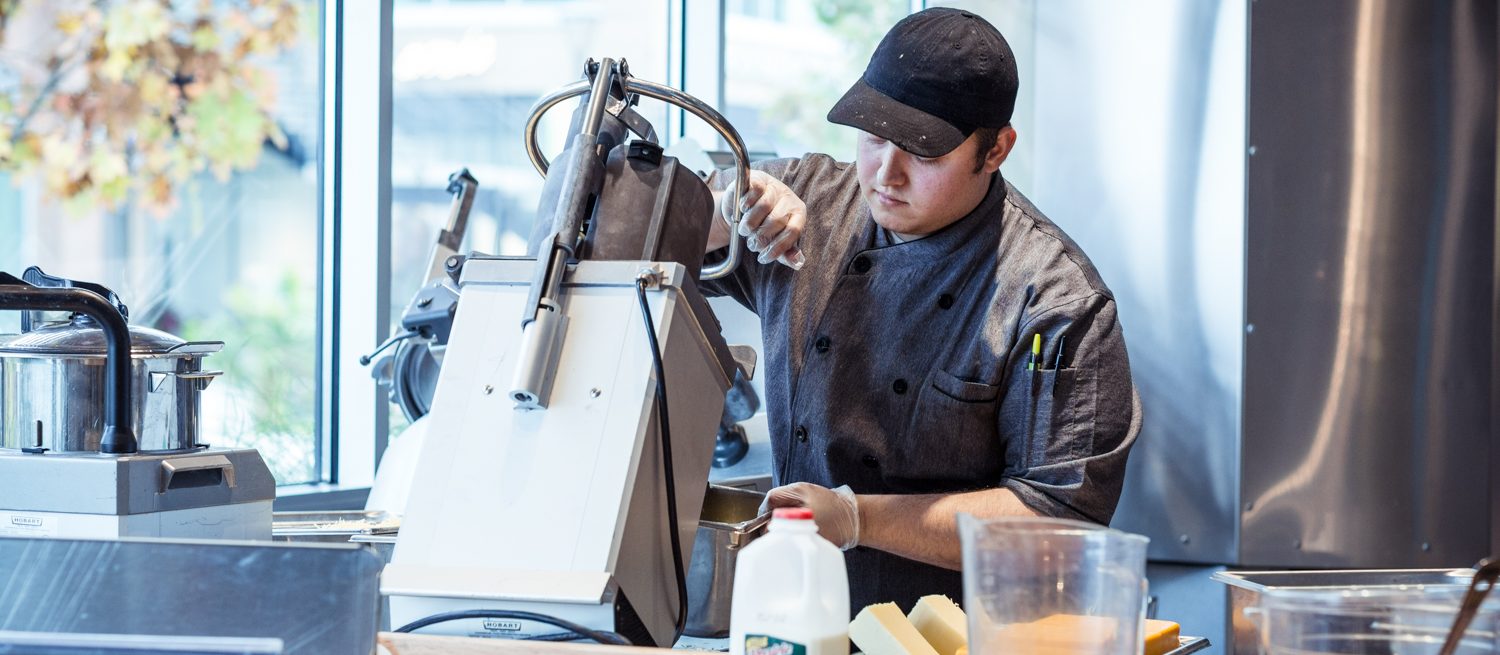Five Reasons to Invest in a Food Processor
3 Min Read By Megan Gray
Our hands can do a lot in the kitchen. They can knead dough, slice vegetables, stir delectable sauces, shred cheese and mold chocolate — among hundreds of other things. However, like a handyman needs their screwdriver or drill, a chef needs to invest in their tools of the trade. For some this could be a mixer; for others it may be a slicer. However, a food processor is one tool that many chefs may underestimate the value of for their kitchen.
Continuous-feed food processors offer several benefits over hand-cutting produce or buying precut fruits and vegetables. Bowl style food processors also have a great spot in the kitchen for mixing, emulsifying and more.
Here are five reasons you should consider investing in a food processor:
1. Time and Labor Savings
It is no secret that dicing several bags of tomatoes or onions will take some time (it might even make you cry). Continuous-feed food processors can dice several pounds of produce in less than a minute and keep the tears to a minimum. Small continuous-feed food processors can process approximately 11 pounds a minute, while larger models can process up to 132 pounds a minute. Having the ability to cut prep time is key, especially when kitchens are trying to save on labor or when they are short-staffed.
2. Consistent Cuts
A chef aims to please their customers, which is why having consistent cuts is important. Several people prepping in the kitchen can mean varying levels of knife skills. With continuous-feed food processors, you can get consistent cuts every time. When loading your food processor, load product against the wall moving clockwise. As the knife moves counterclockwise, this orientation allows that product to be cut consistently. Not to mention that in the marketplace there are a variety of cutting tools for different thicknesses of slicing, dicing and shredding to offer versatility and support quality.
3. Better Food Quality
Buying quality ingredients is important for creating the best meals. While buying precut and prewashed vegetables may be appealing because it saves time, you may be surprised by how much quality those ingredients are losing.
According to the CDC, roughly half of all foodborne illnesses in the United States stem from fresh produce contaminated with Salmonella, E. coli or Listeria. Instead of one head of lettuce being contaminated, when buying pre-cut produce the whole bag is contaminated.
In addition, fresh produce lasts longer and tastes better than precut produce. Whole fruits and vegetables hold a lot of moisture and flavor. Think about slicing a juicy tomato or a fresh cucumber — moisture immediately starts to pool on your cutting board or knife. The same thing happens with precut vegetables, except all the moisture and flavor are nearly gone by the time they reach your kitchen. This will be apparent by comparing the shelf life, too.
Continuous-feed food processors with cutting tools that move at an ideal speed of 420 rpm can help preserve quality. This speed is fast enough to cut consistently and precisely, but gentle enough to maintain the moisture.
4. Versatility
Continuous-feed food processors can do more than just slice and dice produce. Operators can also grate, shred, crimp and julienne — and these options aren’t just limited to fruits and vegetables. You can also process hard cheeses and nuts, along with dry bread for breadcrumbs.
For chopping, mincing, mixing and emulsifying, you can also gain versatility with a bowl style food processor. This machine allows operators to process a variety of recipes including hummus, pesto, dough, dressings.
5. Cost Savings
While a food processor may seem like a big purchase upfront, the payback is very quick — particularly when compared to hand-cutting produce. When you factor in the cost of time, labor and waste, the investment is well worth it. The machine can quickly pay for itself. Consider the total cost of ownership when looking into the purchase.
When investing in a food processor, look for reliable construction, beneficial features and solid technical service — and take the time to train kitchen staff on proper usage. In the long term, you can enjoy quality, consistency and reliability from the equipment to ensure that your menu stays fresh and inviting.


